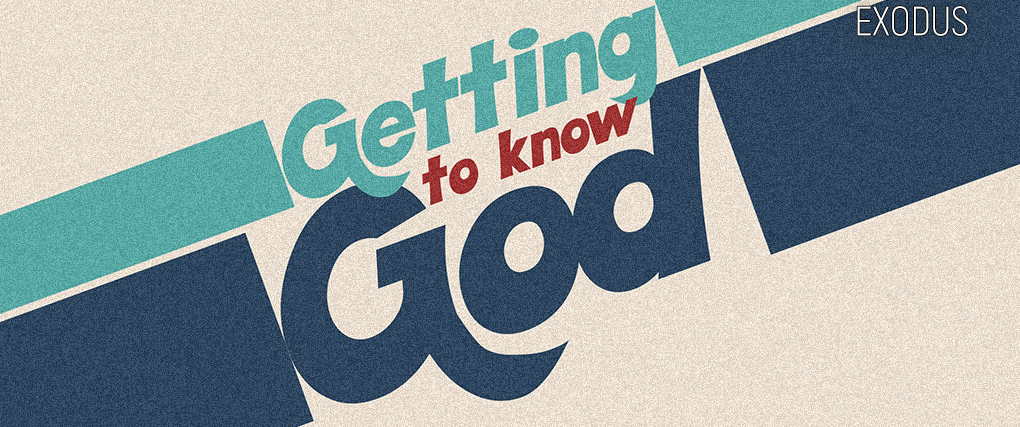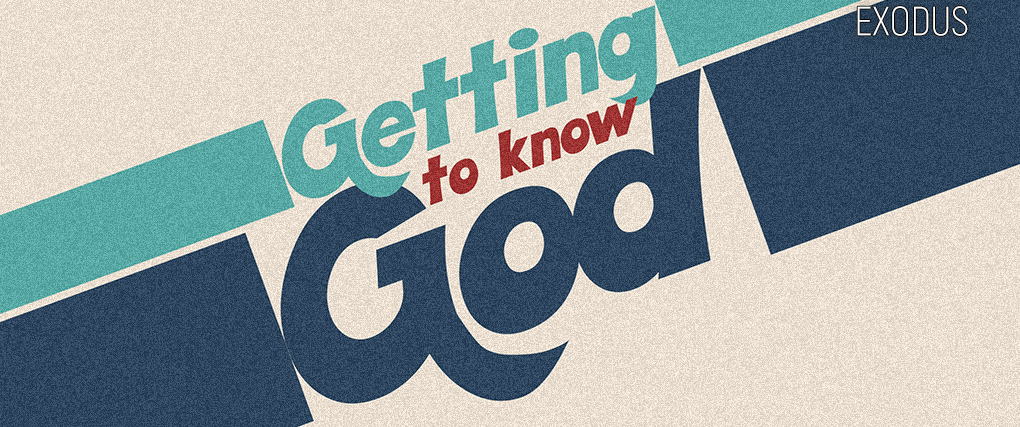Date: Mar. 27, 2022
Exodus 40:1-38
Key Verse: Exodus 40:38
So the cloud of the Lord was over the tabernacle by day, and fire was in the cloud by night, in the sight of all the Israelites during all their travels.
Today is our final passage in the book of Exodus. On June 6, 2021, we started this book with the theme of getting to know God, and over the course of these many months, we’ve learned a lot about God. Even in our first message, we learned that God loves you even if you don’t know him. At the beginning of this book, the Israelites were slaves in Egypt, and they knew very little about God. They didn’t know his name or anything about what he is like. Despite their lack of knowledge, God still loved them. He saved them and brought them out of Egypt to live as a holy nation, God’s people. God guided them through the desert and through battles. He led them through the sea and over the desert. The Lord led them on an incredible journey all the way to this point, and this point is not the end, it is the beginning of a new chapter for God’s people, the nation of Israel. We are at a point where the Israelites finally know enough about who God is to have that knowledge change their lives in a significant way.
Our passage this week, picks up right after last’s weeks passage. Last week, all the pieces of the tabernacle were built, and everything was nearly ready. Everything was built, and Moses inspected all of it to make sure that it was all to spec. Viola and I just started watching this TV show about rich people in New York in the 1880’s. So, one rich family, who is new money, just had a house built and the family was starting to move in. In one early scene, a worker talks to the woman of the house saying that he had finished his task, but the woman of the house said that he wasn’t finished until she had inspected the work and signed off on it. The same was for Moses. The people weren’t done making everything until Moses said that it was done correctly. When Moses saw that all was good, done just as the Lord commanded, Moses blessed them.
Our passage today, starts out, “Then the Lord said to Moses: ‘Set up the tabernacle, the tent of meeting, on the first day of the first month.’” (1-2) After inspecting all the components of the tabernacle and all the articles of worship, the Lord told Moses to set it all up on the first day of the first month. This would mean that the tabernacle would be first set up close to the first Passover celebration. The Passover was on the tenth day of the first month and the tabernacle would need to be set up and consecrated before the first Passover. It was perfect timing. The first day of the year for the first time setting up God’s dwelling place. It’s like what we’ve done here at our beginning. We had our own first independent worship service on the first Sunday of 2007, over 15 years ago. The timing was very advantageous for a new beginning.
The Lord told Moses to set up each of the components inside the tabernacle, like the ark, the table, and the lampstand. The Lord directed Moses to set up everything outside the tabernacle as well, from the bronze altar to the courtyard. Plus, he directed Moses to prepare his brother Aaron and his sons so that they could serve the Lord as priests. Not only did things need to be set up, but they had to be consecrated and made holy. They were just objects that were built, but to serve the Lord, they had to be anointed and consecrated. That meant all the objects and Aaron and his sons. The directions that the Lord gives is reminiscent of assembly instructions. Everything had been fabricated, but now they were to be assembled. It’s like a lot of flat-pack furniture, nowadays. We don’t have to make each piece, but we might need to assemble them together.
About a year ago, we moved into our new house and that meant we needed to get some new furniture. So, there was a lot of things for me to put together. I had to assemble tables, bed frames, shelving, chairs, and even our couch. We purchased our couch online. It’s four seats across, plus a chaise. We wanted a couch the whole family could fit on. It took a while, but our couch arrived in seven different boxes, and we had to put it together. It didn’t take too long. That was one of the nice things about the company. They designed their couches so that they could be assembled easily. It sounds like the Lord designed the tabernacle in a similar fashion. It was designed to be mobile, to be assembled and disassembled in relatively short amount of time.
So, Moses began to assemble everything for the first time. “So the tabernacle was set up on the first day of the first month in the second year. When Moses set up the tabernacle, he put the bases in place, erected the frames, inserted the crossbars and set up the posts. Then he spread the tent over the tabernacle and put the covering over the tent, as the Lord commanded him.” (17-19) Now, Moses opened his first box and proceeded to put together his first IKEA box, the tabernacle. The tabernacle was the first thing that the Lord told Moses to put together and it makes sense because it is the central structure for everything. You can’t put up the ark first because it needs a place to go, and it makes sense to put the tabernacle up before the courtyard. It is central to everything else.
Next, the contents of the tabernacle were put into place. “He took the tablets of the covenant law and placed them in the ark, attached the poles to the ark and put the atonement cover over it. Then he brought the ark into the tabernacle and hung the shielding curtain and shielded the ark of the covenant law, as the Lord commanded him.” (20-21) Before the ark was put into its place inside the tabernacle, Moses took the stone tablets that the Lord inscribed with the Ten Commandments and placed them inside the ark and closed the cover. I really find the level of detail to be very interesting. It gives this passage a level of reality that deepens the passage. Moses, then, put the ark inside the tabernacle and put the curtain up to shield the ark from view. The set up continues with Moses putting the table on the north side of the tabernacle and the lampstand on the south, just like the Lord directed Moses. Not only were these items set up, but they were also furnished. The bread of the Presence was made and placed on the table. The lights were lit, and the incense burned.
Moses, then, closed the tabernacle and worked on the outside, in the courtyard. “He set the altar of burnt offering near the entrance to the tabernacle, the tent of meeting, and offered on it burnt offerings and grain offerings, as the Lord commanded him.” (29) From the altar to the basin, all the articles needed for worship were set up. “Then Moses set up the courtyard around the tabernacle and altar and put up the curtain at the entrance to the courtyard. And so Moses finished the work.” (33) Moses set up the entire tabernacle structure from inside to outside, and finally it was all complete. Months of work were done. The craftsmen built everything, and Moses put it all together.
As soon as everything was done, the Lord came to the tabernacle, “Then the cloud covered the tent of meeting, and the glory of the Lord filled the tabernacle.” (34) Just like the older tent of meeting and the top of the mountain, the cloud covered this new tent of meeting, and the glory of the Lord filled the tabernacle. This tent was the king’s tent, and the king came down to see his new home among his people. The king went inside the tent to see it for himself.
However, there was an issue. “Moses could not enter the tent of meeting because the cloud had settled on it, and the glory of the Lord filled the tabernacle.” (35) Unlike the other tent of meeting and the top of the mountain, not even Moses could go inside. This the Moses who spoke with the Lord as one speaks to a friend. This is the Moses whose face was radiant when he spoke with God. This is the Moses who was at the top of the mountain for forty days and forty nights in the presence of God, twice. This is the Moses who saw the back of God while standing in the cleft of a rock. He has been around God a number of times, but, here, even Moses is unable to go into the tabernacle when the glory of the Lord has filled it. This goes to show you that whatever glory that the Lord showed Moses was still shielded from the Lord’s full glory. Even the glory that is filling the tabernacle is dimmed in some sense, because it just kept the people out and not killed them.
The cloud is the same cloud that watched over them since their exodus from Egypt, but now it had a new purpose. “In all the travels of the Israelites, whenever the cloud lifted from above the tabernacle, they would set out; but if the cloud did not lift, they did not set out—until the day it lifted.” (36-37) The cloud now represented whether the Israelites would stay in place or leave. Just after the tabernacle was complete, the cloud filled the tabernacle, but after that it would stay above it. It would hover above the tabernacle when it was time to stay. When it lifted from the tabernacle, it was time for the Israelites to break camp and begin moving. The Israelites were held captive by the Lord. They were to follow his direction completely regarding when they were to move. There was no way to know when the cloud would lift. They had to wait for the Lord’s direction.
So, the passage and the book of Exodus concludes with, “So the cloud of the Lord was over the tabernacle by day, and fire was in the cloud by night, in the sight of all the Israelites during all their travels.” (38) Like the beginning of their exodus, the cloud watched over them during the day and the fire did so during the night. However, its position had changed. During their early travels the cloud when ahead of them, but with the tabernacle complete, the cloud was in the middle of the camp, in sight of all the Israelites. No matter where you were in the camp, you were not far from the Lord.
God’s position in the camp shows a marked difference from where he was in relation to the Israelites at the beginning of the book. At the beginning of the book, the Israelites were slaves in Egypt with not much regard for the Lord. They worshiped the pantheon of gods that the Egyptians did. Perhaps, they regarded the Lord as one of the multitude of gods they worshiped. They were far from God and the only real mention about God early on what about the midwives who feared God more than Pharoah, when he ordered the Israelite children murdered at birth. The other time was when the people were crying out because of their slavery and God listened. The Lord really isn’t in the picture much until he approached Moses in the burning bush, far from the Israelites. It shows the distance the people had with the Lord. They were far from God, but over the course of the book, the Lord moved closer and closer.
When God directed Moses to go tell Pharoah to let his people go. It was under the pretext of having the Israelites to go out into the wilderness to worship him. The people new little of God, so they had to travel to worship him. But as they learned more about God during the plagues and they received instruction about the Passover, the Lord moved closer in the cloud. He wasn’t merely in some random location in the wilderness; he was now with them, watching over them in the cloud. He shielded the Israelites from the Egyptians when they chased after them, providing cover as they crossed the parted sea. When Moses set up the first tent of meeting, it was positioned outside the camp. It was not a part of the encampment, but some distance away. The Lord was closer, but he was still not near his people. Once the tabernacle was complete, the Lord’s dwelling place is among his people. He was right in the middle of their lives. The Lord was always the same. He wanted the people to worship him. It is what the Lord directed Moses to say to Pharoah all the way back in Exodus 7, and the tabernacle is the fulfillment of that desire for worship.
As the people’s relationship with God strengthened, the Lord moved from the distance to the periphery to the center of their lives. He was now dictating when they should get up and move camp or stay in place. They looked to God for guidance in their daily lives, which is a far cry from a God who was in the wilderness or something to fear on the outskirts of the camp. The people learned more about who God was and the more they learned, the more they relied on him in their lives. Moses wrote later, “But if from there you seek the Lord your God, you will find him if you seek him with all your heart and with all your soul.” (Deuteronomy 4:29) This thought is echoed in the New Testament in James 4:8, “Come near to God and he will come near to you.” When the Israelites were open and willing to seek God, he met them and became the center of their lives. It was a process that was fraught with failure. They grumbled and despaired many times before this point, but each of those times was an opportunity for them to understand more about the Lord their God. Even when they failed to live up to God’s covenant, God was there with mercy. The Lord was livid, but he was merciful. They had just promised to follow God, and not long after Moses went back up the mountain to meet God, they had Aaron to make an idol for them to worship. They proceeded to break the covenant in the worst way possible. But, through that, they learned about the Lord’s righteous anger and his ability to forgive, and it brought them closer than ever.
So, by learning more and more about God, the Lord began to move to the center of the Israelites’ lives. Now, he was a part of their daily lives. He wasn’t just one of the people, but the center of their lives. Daily decisions were now made based on the Lord. Whether they would stay or go was up to the Lord and the people had to rely on that. The tabernacle was centered in the camp. It was the king’s tent, the center of the world for the people. Now, the people weren’t perfect. They would still stumble, even though the Lord was the center of their world. There are countless examples of the Israelites falling away from God in later books of the Old Testament, in fact, the exile to Babylon is a direct response to their falling away from God, but the Lord would never give up on his people. Despite their shortcomings, the Lord was still with them and preparing a Messiah for them in Jesus, who we have the pleasure of getting to know.
I see a lot of parallelism to my life. Prior to this current millennium, I knew very little of God. I didn’t grow up with Jesus or the Lord at all. In 1998, I started college, here, at Illinois Tech with no regard to God. By the time I was a junior, I was asked to Bible study five times by the same person, but each time I refused, but the Lord would move closer. It was through a friend that I finally started studying the Bible, but for two years, my answers were short, and my Bible teacher wondered why I was still returning week after week. When I graduated in 2002, I thought I had an out for Bible study, but God was not done with me yet. He guided me to attend graduate school here and continue studying the Bible. Eventually, there was a breakthrough. I refused to attend worship service, but I gave in for a Christmas one. The following January, I began to regularly attend worship. The more I sincerely approached God, the more I decided to make my decisions based on God. When PhD studies fell through, I decided to stay in the area because God called me here. When I lost my job, I knew I had to stay and serve because this is where God called me to be. My life has become more and more centered on God, the more I get to know him. Now, I am not a perfect man and I stumble far more often than I wish to admit, but I have comfort that, although I may stumble, the Lord shows his mercy to me and draws me nearer to him.
I am not unique in my journey. I can see it here in this passage, in the entire book of Exodus. When we get to know God, the closer he comes to us. The Lord became the center of the Israelites’ lives, but in Christ, the Lord becomes the center of our hearts. With Jesus, the Lord can dwell, not just with us, but within us. It goes deeper than what the Israelites saw. We have that blessing in our lives and we can use it as an indicator for our lives of faith. If we are sincerely desiring God, we can see him moving more and more to the center of our lives. When we get to know God and begin to cultivate a relationship with him, God goes from being distant to being just a part of our lives to become the center of our lives. This means Bible study; this means prayer; this means being a part of a body of believers. When we are sincere with these things, we learn about God and yearn to know more about God. Although we may stumble, we have the knowledge of the Lord’s mercy and grace. We know just how much he loves us, because he sent his one and only Son to die on the cross for sins. Death is swallowed up forever by the fury of his love. We don’t forget what the Lord has done for us. He is the God that fights for us, the Lord of victory. Although we are at the end of Exodus, it is the perfect opportunity to start to get to know God.





